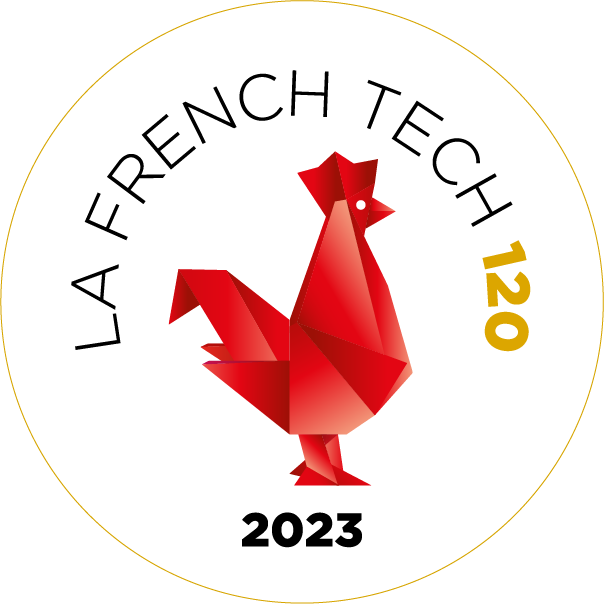Home > Newsletter > Constell'Actions December 2023

Constell'Actions n°5
December 2023

KINÉIS CONSTELL’ ACTIONS
Kinéis Constell'Actions is the monthly newsletter devoted to progress on the design and deployment of the Kinéis connectivity system for the Internet of Things (IoT). This December marks the end of an action-packed 2023, both in terms of system qualification and the ground segment. The Kinéis teams obtained convincing results in the last two tests carried out on the Proto-Flight Model, before the start of nanosatellite industrialisation. With just a few months to go before the 5 launches, the adventure continues...
Welcome aboard and enjoy your reading!
POSITIVE RESULTS FOR ELECTROMAGNETIC TESTING OF PROTO-FLIGHT MODEL IN ANECHOIC CHAMBER

The Kinéis-Hemeria teams in the anechoic chamber at Astrolabe, behind the Proto-Flight Model
The Kinéis and Hemeria teams carried out ElectroMagnetic Compatibility (EMC) tests on the Proto-Flight Model (PFM) of the Kinéis satellite at Astrolabe (Airbus Defence & Space) in Toulouse. The aim of these tests was to check that the satellite is not subject to any internal electromagnetic interference by operating it in all its modes.
To do this, the PFM was placed in an anechoic chamber (an experimental room with walls that absorb electromagnetic waves, so as not to generate echoes that could disrupt the measurements) so as to reproduce the electromagnetic environment that it will experience in orbit.
The results are excellent, demonstrating the absence of interference from the satellite on radio frequency links.
These EMC tests completed the environmental and qualification tests carried out on the 1st flight satellite, which will enable the industrialisation phase to be launched for the other 24 satellites in the constellation.
Next step: start of nanosatellites industrialisation
GROUND STATION/SATELLITE TESTS DEMONSTRATE THE EXCELLENT PERFORMANCE OF THE ON-BOARD LINK
The Kinéis system provides communications between the ground stations and the 25 satellites in the constellation. To check the quality of these ultra-high-frequency (UHF) links, the Kinéis teams set up tests in their laboratory. The aim of these tests was to validate the radio frequency (RF) compatibility of the remote control (RC) link, i.e. the uplink between the ground stations and the satellite. Over a period of several days, the engineers measured the quality of this UHF link (frequency around 400 MHz) transmitted by the ground station's system beacon to the Kineis payload receiver. The aim was to assess the payload's reception performance and check that there was no degradation of the signal transmitted by the ground station. At the end of the tests, the teams confirmed the payload's expected performance. The results attest to the very good performance of the TC link between the ground stations and the nanosatellites in the Kinéis constellation.
Next step: RF End-To-End tests with the Proto-Flight Model satellite on the remote control and telemetry links (TMTC), next spring, before departure for the launch site in New Zealand.
NEW TECHNICAL QUALIFICATION TESTS DEMONSTRATE THE OPERABILITY OF THE KINEIS SYSTEM IN "ROUTINE" AND "MANOEUVRE" MODES

Kinéis Command and Control Centre at the CNES Toulouse Space Centre
The recent technical qualification tests (QT) were carried out over 2 intense weeks. The CNES and Kinéis engineers demonstrated a high degree of operational adaptability during these tests, which aimed to maintain all 25 nanosatellites in the constellation on station, in 'routine' and 'manoeuvre' modes, by integrating the complete ground segment of the Kinéis system with a constellation simulator.
The positive results of the routine QT tests demonstrate the capacity of the ground segment to operate the 25 nanosatellites in routine mode, with the implementation of the various automated systems required for the smooth running of the Kinéis mission. The human element will remain present to ensure that the system is working properly and to intervene on the various components if necessary.
The 'manoeuvre' TQ tests aimed to qualify all the specific operations involving satellite propulsion, such as thruster calibration at the beginning of life, debris avoidance manoeuvres, manoeuvres during extreme solar activity, etc. These tests highlighted the adaptability of the CNES/Kinéis teams in operating the Kinéis constellation and reacting to unforeseen technical events. This experience has enabled the teams to pool new knowledge on resolving anomalies in the system.
The next 'manoeuvre' QT tests will be integrated into the upcoming system tests (from early 2024 until the launches).
Next QT step: 'routine' qualification tests with injections of anomalies into the system chronology in order to prepare the teams to resolve malfunctions.
THE NEW GROUND STATION DEPLOYED IN CHILE BRINGS TO 12 THE NUMBER OF KINEIS GROUND REMOTE STATIONS WORLDWIDE

One of the two satellite dishes installed at the Kinéis ground station in Chile
The last ground station installation of 2023 took place in Chile, on a site on the edge of the Pacific Ocean, 420 kilometres north of Santiago, near La Serena. It took seven days to deploy the 2 parabolic antennas (without radome) and the 3 UHF antennas. The tests carried out on site confirm that the installed antennas are working properly. The site survey was carried out in June 2022 by the French company Enviroearth (Aix-en-Provence), which is working with Kinéis to find sites around the world for Kinéis system ground stations.
Next step: deployment of a ground station in Alice Springs, Australia


À propos
Créé en 2018, Kinéis est un opérateur IoT satellitaire.
© kineis - IoT everywhere - 2023
Nous contacter
Adresse
11, rue Hermès
31520 Ramonville-Saint-Agne
France
Téléphone
05 61 39 47 00
Liens
FAQ
Espace presse
Newsletter
Actualités
Politique de confidentialité
Politique de cookies
Plan du site
Restons connectés







